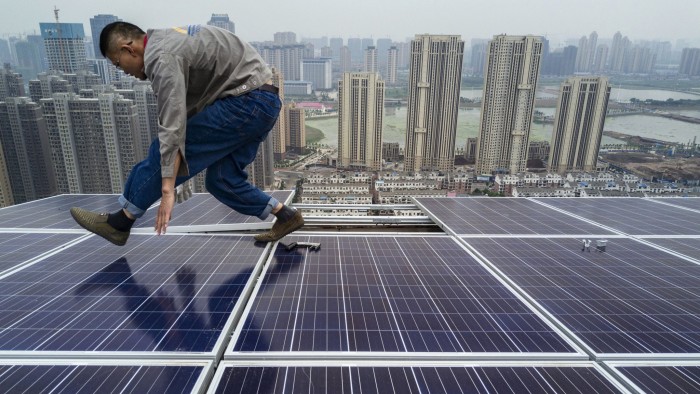Impact investors fail to measure negative outcomes

Roula Khalaf, Editor of the FT, selects her favourite stories in this weekly newsletter.
True impact investors would never let a fossil fuel company boast about its community engagement while ignoring its high carbon emissions. Yet it is still too common for impact investors to focus only on investments’ positive outcomes. There is a double standard here and we need to correct it.
That need is intertwined with efforts to tighten definitions of terms used in the responsible investment space. There has been an influx over the past five years of funds labelled “impact”, with little agreement on how this badge differs from similar product terms like sustainable, responsible, green or ESG (environment, social, governance).
Reaching a consensus on language that clearly segregates “values alignment” (my assets broadly reflect my values) from “impact creation” (my assets have been deployed to solve a big world problem) will take time, as will settling on a checklist against which we can categorise new financial products. Yet one thing is certain: however impact investing is defined, the pursuit of “positive net impact” must be part of it.
Every human activity produces both positive and negative impacts. Unless we measure and manage the negative along with the positive, we cannot be sure we are achieving our intended net societal and environmental benefits, nor can we take corrective action.
The ESG world is a step ahead here. While it focuses on long-term financial performance rather than deep-level impact, it typically considers both risks and opportunities.
So how can investors who say they care about impacts beyond just those that directly affect financial performance justify looking past negative outcomes?
One argument for doing so is that impact investments traditionally support earlier-stage, smaller companies: a social entrepreneur in Ghana should not be held to the same compliance burden as a major energy supplier. This is sensible to a degree — the extent and cost of disclosure should be appropriate to the size of the enterprise. But it makes no sense to say that companies attracting impact investors need not disclose detrimental outcomes while traditional companies must.
If I make an impact investment in an education company that emits a lot of greenhouse gases, that must be taken into account alongside the business’s positive impact. Similarly, the climate-concerned investor backing a solar panel company must not ignore the use of slave labour in the supply chain.
Many industry leaders agree. The International Finance Corporation — which focuses on the private sector in developing countries and is part of the World Bank Group — recently launched a set of impact management principles with this goal in mind. Measurement of net impact, meanwhile, is built into a reporting model created by the global industry consortium Impact Management Project. The framework calls for more granular reporting on every material positive and negative effect an enterprise may have. IMP hopes the approach will lead to a consolidated impact statement that runs parallel to a company’s financial reporting, provided by traditional auditors or rating organisations. The presentation of financial statements offers a rough guide to what it could look like — a quantitative summary that enables comparisons of similar companies, along with an explanatory narrative.

In a rapidly evolving field, the best practices of three years ago become the minimum bar today. That can be frustrating to product providers, but their success depends on continuous improvement.
Words carry meaning. Asset owners committed to “deep positive net impact” view that goal not as a static accreditation, but as a dynamic journey. “Deep” conveys that some investors want to go beyond values alignment and ESG risk factors, and are moving towards investments in companies that contribute directly to solving the world’s biggest problems.
Positive net impact takes responsibility for the inevitable negative impacts of every investment and measures the overall contribution. Impact investing starts with good intentions, but it cannot end there. As the influx of funds continues, we have a collective role to assure money is deployed with rigour and integrity to achieve both positive impact and financial performance.
The writer is chief executive at Toniic, a global network of asset owners that engage in impact investing
Comments